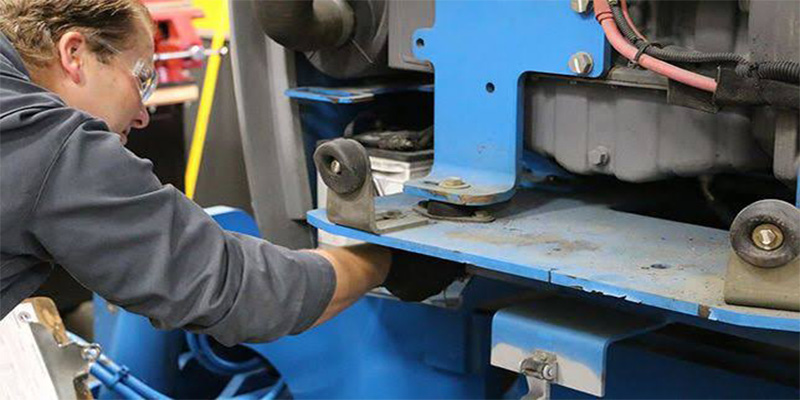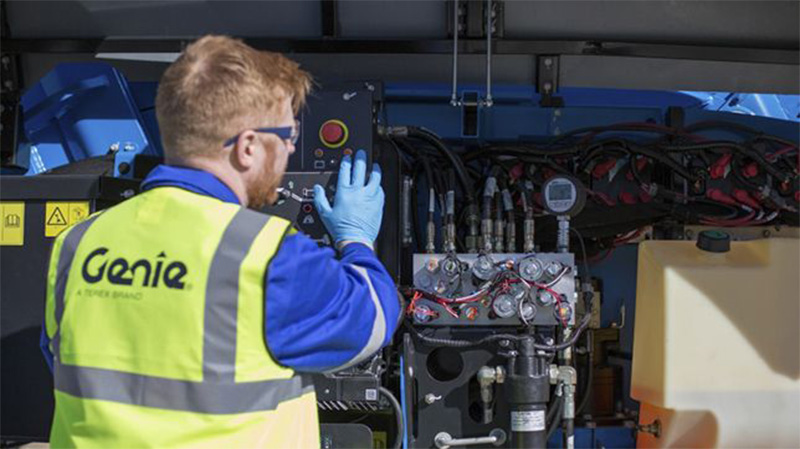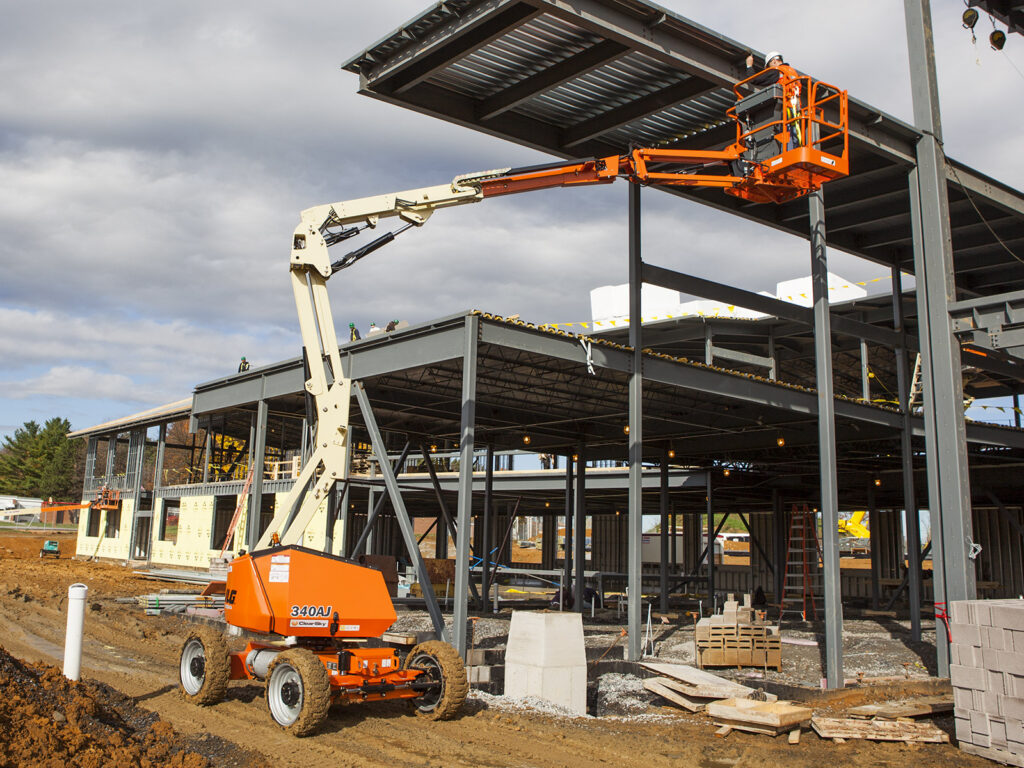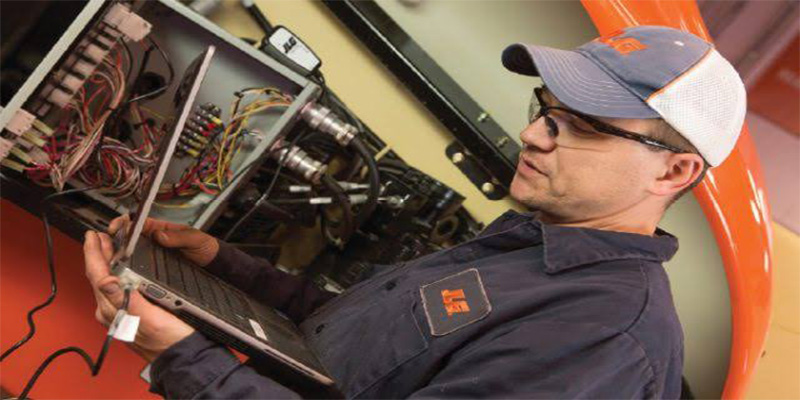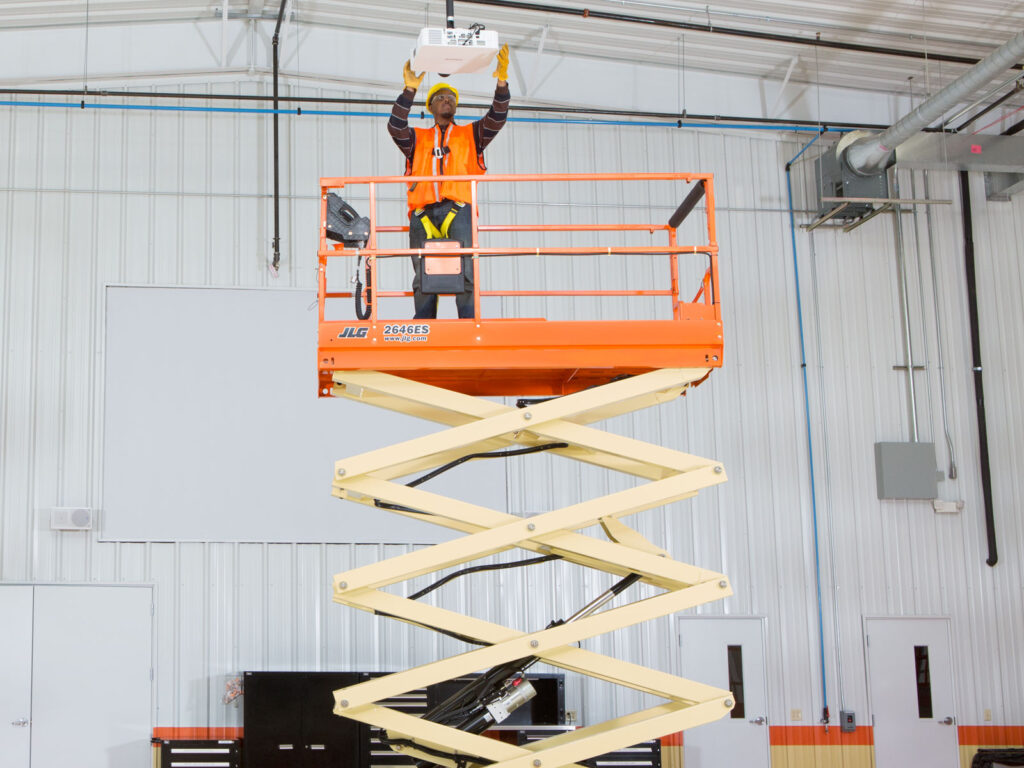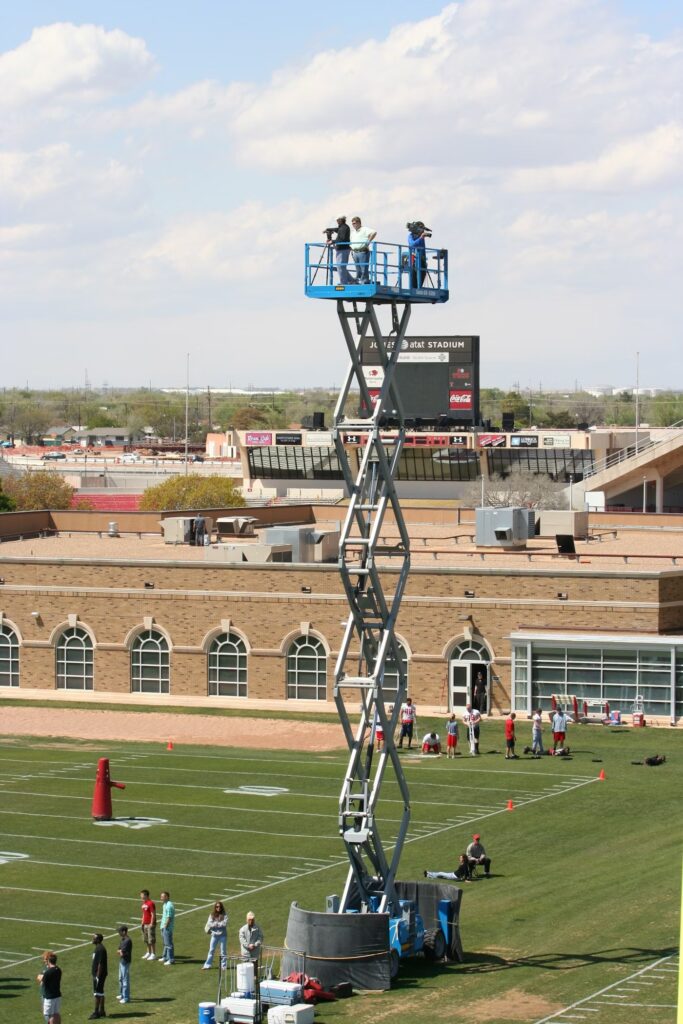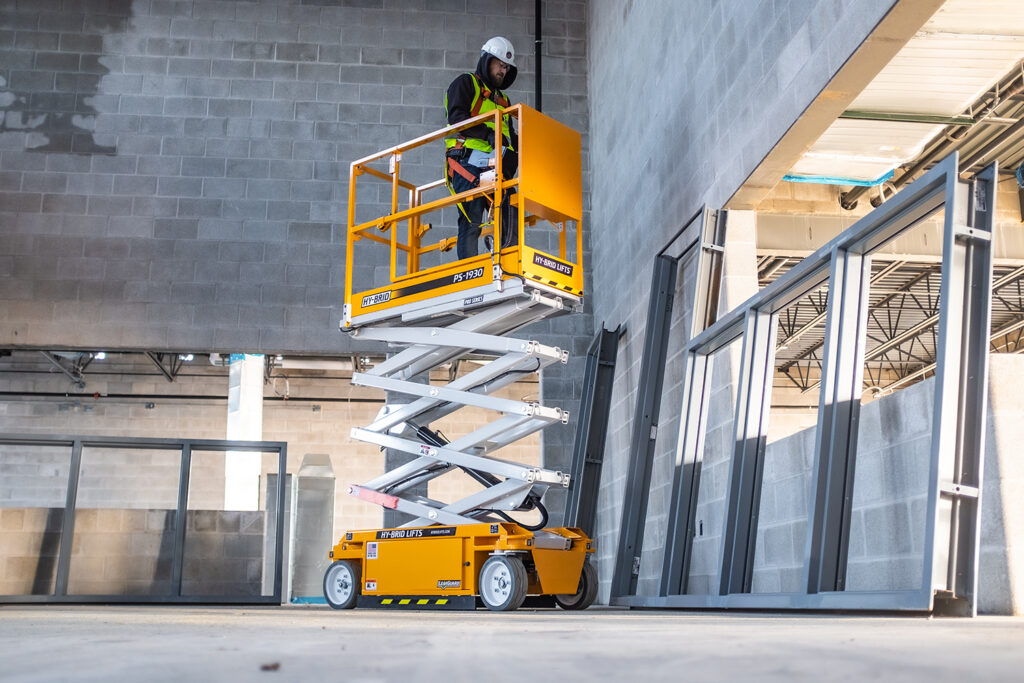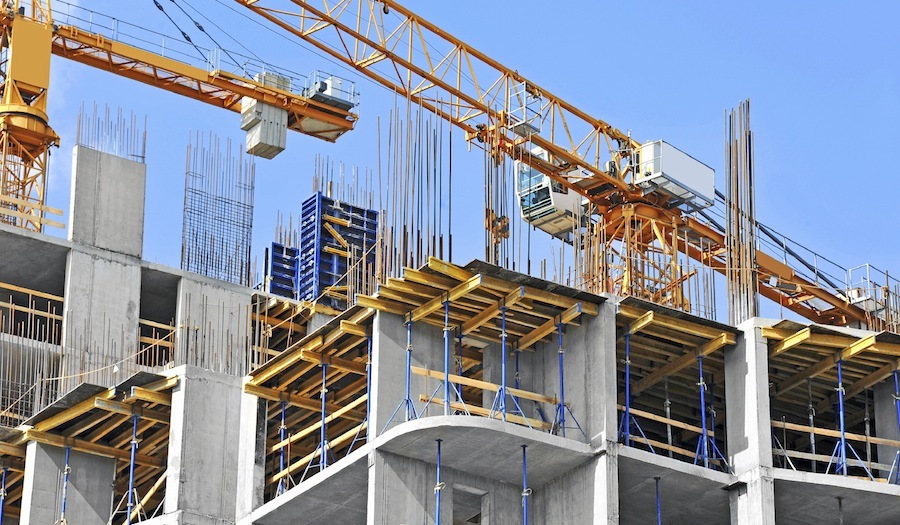Ladders are effective for ascending or descending from scaffolds and elevated platforms. However, they should not be utilised for performing tasks at significant heights, as the risk of falling and sustaining severe injuries significantly increases with greater elevation. Ladders simply do not provide adequate protection against falls.
Instead, consider using scissor lifts and boom lifts, which offer a convenient and stable platform for our staff to work on. Scissor lifts are equipped with built-in fall protection in the form of guardrails on the operating platform. These rails serve as a safeguard against staff accidentally falling over the edge, provided they are used correctly.
Employees who have received proper training are less likely to engage in unsafe work practices, such as attempting to climb over the guardrails or standing on them while working.
Regardless of age, height, or experience level, every employee deserves to work in a safe environment, especially when performing high-reach tasks in the construction industry.
The Problem With Ladders
Ladders always have their time and place, and when correctly set up and used, they can serve as a valuable tool for accomplishing high-reach tasks. Nevertheless, issues often arise during ladder setup and utilization, and failing to adhere to proper guidelines can result in injuries and associated costs.
Based on research involving 1,400 ladder accidents, it was revealed that 66 percent of those injured had not received training on how to inspect and set up ladders. This underscores the misconception that ladders are effortlessly convenient and ready to use on job sites, which is why they should be considered as a last resort for any task. On the contrary, there is equipment available that arrives at the job site in a ready-to-use state, such as low-level scissor lifts, which provide users with not only enhanced safety but also efficiency.
Low-level scissor lifts enable workers to reach heights of approximately 6 meters, encompassing around 90 percent of high-reach tasks. Despite the common belief that lifts are cumbersome, low-level units are compact and, in some cases, occupy less space than ladders. For instance, a 3.5-meter stepladder spreads its legs nearly 2 meters apart, resulting in the ladder consuming about 1.8 square meters of floor space. Conversely, a low-level lift with a 3-meter platform only takes up approximately 70 square centimetres of space. Both options offer similar working heights, yet scissor lifts have a significantly smaller footprint, approximately 58 percent smaller.
While folding and moving a ladder may seem straightforward, the taller it becomes, the more unwieldy it gets. Not only do ladders become heavier as their height increases, but the challenge of manoeuvring them around corners and into tight spaces also grows. On the contrary, low-level lifts eliminate the need for heavy lifting and complex manoeuvring. Workers can easily lower these units to an overall height as low as 1.6 meters. Additionally, if a lift is self-propelled, operators can use the platform controls to navigate to the next location effortlessly.
It’s true that low-level scissor lifts may not match the lightweight nature of ladders. However, several of the lightest scissor lift models can be safely used on surfaces like tile, laminate, and raised floors without the risk of causing damage or injury.
Ladders Don’t Size Up
Low-level scissor lifts provide operators with the ability to reach working heights of up to 20 feet, covering approximately 90 percent of high-reach tasks. While many may perceive the size of a lift as a drawback, low-level units are surprisingly compact and, in certain cases, occupy less space than a ladder. For example, the legs of a 12-foot stepladder spread out to nearly 80 inches apart, resulting in the ladder consuming approximately 19.43 square feet of floor space.
In contrast, a low-level lift with a 10-foot platform occupies only 8.24 square feet of space. Both options offer the same 16-foot working heights, yet the scissor lift boasts a 58 percent smaller footprint, making it suitable for use in more confined areas.
Now, what about the ease of maneuvering through doorways, negotiating tight corners, or navigating within confined spaces? Collapsing or folding a ladder may seem relatively straightforward, but as its height increases, moving it becomes progressively more cumbersome. Not only do ladders become heavier with increased height, but their greater heights also present challenges when trying to maneuver around corners and fit into tight spaces.
Low-level lifts, on the other hand, eliminate the need for heavy lifting and awkward maneuvering. Workers can simply lower these units to an overall height as low as 63.6 inches. Furthermore, if it’s a self-propelled lift, operators can use the platform controls to easily navigate to the next area.
Moreover, certain lifts are equipped with a zero-turn radius feature, combined with narrow widths as small as 27.6 inches, allowing them to move effortlessly through 32-inch doorways and down hallways. Using a lift also reduces the physical strain associated with transporting a large ladder.
While low-level scissor lifts may not match the lightweight nature of ladders, some of the lightest scissor lift models can be safely used on surfaces like tile, laminate, and raised floors without the risk of causing damage. Some push-around units weigh as little as 575 pounds and have wheel loads as low as 115 psi. Meanwhile, certain self-propelled models are even more impressive, featuring dual front wheels that enable them to achieve wheel loads as light as 62.7 psi.
It is clear that low-level scissor lifts can access nearly all the same areas as ladders, but their impact on worker safety is significantly greater than their petite size would suggest.
Rise Above Risk
Working at heights presents numerous challenges, and when a ladder is the chosen tool for such tasks, these challenges become even more complex and can strain the human body. For instance, HVAC and plumbing technicians who install pipes and ductwork overhead require a constant supply of materials and tools as they progress through their work. After completing one section, they must descend, reposition the ladder, retrieve additional materials, and ascend again. This not only proves inefficient but also exposes them to the risk of repetitive climbing-related injuries, such as knee and hip strains, and prolonged use of ladder rungs can lead to painful plantar fasciitis.
Furthermore, when workers are on a ladder, their lateral reach is severely limited, restricting their ability to accomplish tasks efficiently in a single location. Consequently, individuals often feel compelled to overreach, putting themselves at risk of the ladder toppling over.
These factors contribute to the persistent presence of ladder-related violations in OSHA’s Top 10 most cited violations year after year. In fact, according to the most recent study conducted by the Center for Disease Control, ladders were involved in 81 percent of all fall injuries among construction workers in 2011.
In contrast, lifts can support substantial weights, up to 340 kilograms, and provide a generous platform space of up to 1.5 square meters, including their extensions. This capacity allows for the easy transport of ample materials and supplies. Loading a scissor lift with these materials is a less physically taxing task, and because operators can transport more items at once, they make fewer trips up and down, ultimately enhancing productivity. Furthermore, certain models are equipped with integrated pipe racks, offering installers a convenient place to store longer materials. These features contribute significantly to increased efficiency while maintaining a high level of safety.
Don’t Pay The Price
Many would concur that a low-level lift offers significantly improved safety and efficiency compared to a ladder. However, there remains a crucial issue — the accessibility of a low-level scissor lift. When a lift is not readily available on the job site, it is unlikely that an employee will request one and wait for its arrival. Instead, they are inclined to proceed with what they have at hand, which often happens to be a stepladder. This decision rapidly escalates the risk of on-the-job injuries resulting from falls.
The concern goes beyond injuries, though. Falls come with substantial financial implications. A single worker’s compensation claim can demand tens of thousands of dollars, just a fraction of the estimated $24 billion in annual payments associated with ladder-related injuries, as estimated by the U.S. Consumer Product Safety Commission.
Under the Occupational Safety and Health Act, employers bear the responsibility of providing a safe workplace for their employees. While making safer equipment like low-level scissor lifts available to workers is a significant aspect of this obligation, it is not the sole factor. Employers must also ensure that employees are trained to discern when and where to utilize such equipment and understand that ladders should always be the last resort. If a scissor lift can be deployed in the given area, it should invariably supersede the use of a ladder.
In fact, many contractors who are well aware of the dangers and financial implications associated with ladders outright prohibit their presence on job sites unless deemed absolutely necessary, and they enforce specific protocols accordingly.
In addition to reducing injuries and workers’ compensation costs, there is another often overlooked advantage to offering low-level lifts: employee retention. The workforce landscape has evolved significantly over the past three decades, and retaining employees has become more challenging than ever. The younger workforce, in particular, is less inclined to subject their bodies to the physical demands of daily construction work, and experienced industry veterans take longer to recover from such tasks.
Supplying all employees, whether they are 25 or 55 years old, with equipment that enables them to perform their tasks safely and efficiently not only lowers the risk of injuries but also conveys to employees that their well-being and time are valued by their employers. This twofold benefit results in a safer and happier workforce, which, in turn, translates into increased productivity for employers.


